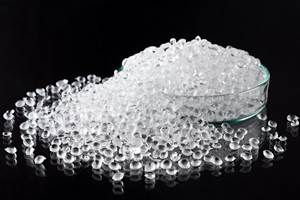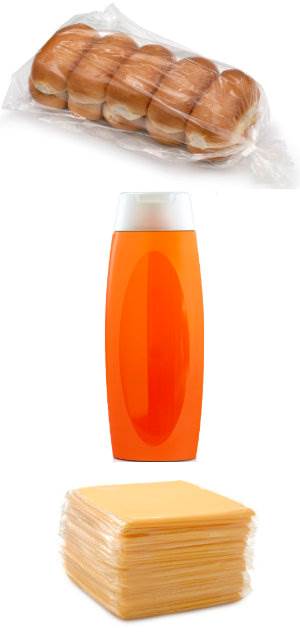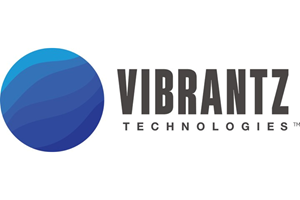Colorant Makers Expand Services to Speed Customers' Product Development
Independent color-concentrate producers have been expanding the range of services they offer beyond simple color matching.
Independent color-concentrate producers have been expanding the range of services they offer beyond simple color matching. They are providing more assistance in color design, product design, and molding or extrusion process development. Two goals underlie this effort: First, to make their customers more competitive and speed their products to market. And second, to compete with the capabilities of major resin and pigment producers.
One example of this trend is Clariant Masterbatches, based in Muttenz, Switzerland. Last June, it opened its newest ColorWorks Design & Technology Center at its U.S. headquarters in Holden, Mass. There are now seven global ColorWorks centers, three of them in the U.S. The NYC Design Studio in Manhattan and the ColorWorks Center in McHenry, Ill., focus on packaging, while the new Holden center aims for a wider array of consumer products, with an emphasis on injection molded parts. Its projects range from caps and closures to medical packaging and devices, computer and camera housings, small appliances, razors, toys, and recreational equipment.
Each center offers services based on global platform of capabilities that include color consultation, 3D rapid prototyping, and on-site molding, extrusion, and compounding. Their aim is to get new products to market faster by tackling subjects like color, special visual effects, brand identity, and processing issues early in the development process. Then the regional centers add mechanical testing, computer mold-filling and shrinkage analysis, and other services tailored to the needs of local customers. The ColorWorks Center in McHenry, for instance, has a tri-layer blow molding machine it uses to produce sample bottles for evaluation.
Working with color
Educating industrial designers or engineers on the merits of working with color at the very beginning of product development is a key goal of the ColorWorks Centers, according to director of technology Bill Blasius. Emphasizing that color is an aesthetic as well as a chemical variable, Blasius says, "The new ColorWorks Holden offers a concrete step-by-step process for designers to reduce the technical risk as well as control the cost of working with color. This includes selecting the right shade, but also taking into consideration resin properties, performance additives, tooling, and the molding process."
A first step in the color services offered is "virtual design" in the computer. Clariant recently expanded its capabilities in this area with the launch of its own proprietary color-visualization design software. It incorporates a 3D CAD function that allows designers to see a three-dimensional part with textures, transparency, and shaded lighting. Especially interesting is the software's ability to simulate the way color-shift pigments and glitter/sparkle special effects respond to changing angles of viewing and lighting.
Next, the ColorWorks staff at Holden will make an FDM rapid prototype of the part in ABS resin. The prototype is painted using the actual pigments or dyes that will be used in the final compound. Blasius aims to provide the prototype within two days. Following customer approval, a color concentrate is formulated and compounded. Next, Clariant tests the product for properties such as tensile strength, notched Izod impact, uv exposure, and thermal stability.
This is followed by a Moldflow analysis that models the optimal molding conditions for the part. Clariant obtains more accurate predictions of the processing behavior of colored resins by giving Moldflow the real physical constants of the colored material, which Moldflow plugs into its database. Says Blasius, "By evaluating all the parameters that affect the flow, cooling, and warping behavior—such as melt viscosity, glass-transition temperature, heat capacity, and thermal diffusivity—a more accurate analysis can be run, compared with running the analysis based on natural-resin parameters."
Blow molding capabilities
Two other color masterbatch producers, PolyOne Corp. and Teknor Color Co., recently expanded their color services for blow molders of packaging and toys. PolyOne now has six blow molding machines at its U.S. concentrate facilities in Avon Lake, Ohio; Glendale, Ariz.; and Suwanee, Ga. The machines allow faster color matching by eliminating traditional production-line trials at the customer. Also, customers get a more realistic appraisal of a color or effect by examining it on a 3D object such as a bottle instead of a flat chip. PolyOne's blow molding equipment reproduces exact wall and layer thicknesses in bottles, allowing users to evaluate the effect of an object's opacity on color.
Besides monolayer and tri-layer extrusion blow molders, the Suwanee facility also has stretch-blow machines for PET bottles. PolyOne also has injection presses with bottle-cap molds, film extrusion lines, and rotomolding equipment to provide color samples.
PolyOne also expanded its color communication and matching capabilities by simulating more than 4 million colors for its OnColor Virtual Color Technology (VCT) system—a significant upgrade from the previous 50,000 colors available on the system. OnColor allows color data to be stored, transmitted, and viewed on a computer, eliminating the need to exchange physical color samples. PolyOne says the system can shorten the color-matching process from several weeks to less than a week.
The current 4 million colors are designed for PE and PP. Addition of another 2 million to 3 million colors for PS is currently under way. Colors for PET will be in place by mid-year, according to technology director Peter Prusak. The system is now operating at each of the company's six U.S. color-matching centers and will be installed at its Mexican and European sites.
The VCT electronic database stores pigments and formulas for matching each of the millions of colors. Users can take their color-match formula straight from the computer to create samples, thus reducing or eliminating the need for trial and error. VCT also contains performance data such as weatherability and heat stability to help users select appropriate pigments.
Meanwhile, Teknor Color is operating a new product-development pilot plant to support molders of PP, PE, and PET bottles. It has an extrusion blow molding system that can produce monolayer to three-layer PP and PE bottles. There is also an 80-ton injection molding press and tooling to make PET preforms for bottles.
The pilot plant is located at Teknor Color's Pawtucket headquarters, but the company has a fully equipped color laboratory at each of its five U.S. production facilities. The laboratories are linked to a central database to ensure consistency from one location to another. "For packagers that outsource to multiple molders, or for bottle manufacturers with multiple locations, we provide a single central resource for color matching in all of the materials used for their product lines," explains v.p. and business manager Louis R. Cappucci.
Adds Meritt M. Siers-Foster, color technologist and manager of the pilot plant's laboratory, "The more diversified the product line, the greater the challenge in maintaining absolute color uniformity from one package to the next. A national brand program may involve both single-layer and multi-layer bottles, call for bottles based on both polyolefin and PET resins, and include other types of packaging—requiring us to supply matching colors in resins such as polycarbonate or polystyrene. This is why it is vitally important for designers to see colors as they appear in real bottles, not just color chips."
Related Content
K 2022 Additives & Materials: Sustainability in the Lead
Nearly all of the new additives highlighted at the big show are aimed at enhancing recyclability of commodity resins and some volume engineering resins such as nylon and PC. A few new materials, on which we had not previously reported, also surfaced at K 2022.
Read MorePFAS-Free Processing Aid for Blown Film Extrusion
Ampacet’s new processing aid said to perform as well as fluoro-based PPAs in blown film.
Read MoreResins & Additives for Sustainability in Vehicles, Electronics, Packaging & Medical
Material suppliers have been stepping up with resins and additives for the ‘circular economy,’ ranging from mechanically or chemically recycled to biobased content.
Read MoreVibrantz Technologies’ Leadership Changes
Formerly Chromaflo and Ferro, Vibrantz announces shifts in leadership roles.
Read MoreRead Next
People 4.0 – How to Get Buy-In from Your Staff for Industry 4.0 Systems
Implementing a production monitoring system as the foundation of a ‘smart factory’ is about integrating people with new technology as much as it is about integrating machines and computers. Here are tips from a company that has gone through the process.
Read MoreLead the Conversation, Change the Conversation
Coverage of single-use plastics can be both misleading and demoralizing. Here are 10 tips for changing the perception of the plastics industry at your company and in your community.
Read MoreFor PLASTICS' CEO Seaholm, NPE to Shine Light on Sustainability Successes
With advocacy, communication and sustainability as three main pillars, Seaholm leads a trade association to NPE that ‘is more active today than we have ever been.’
Read More






























